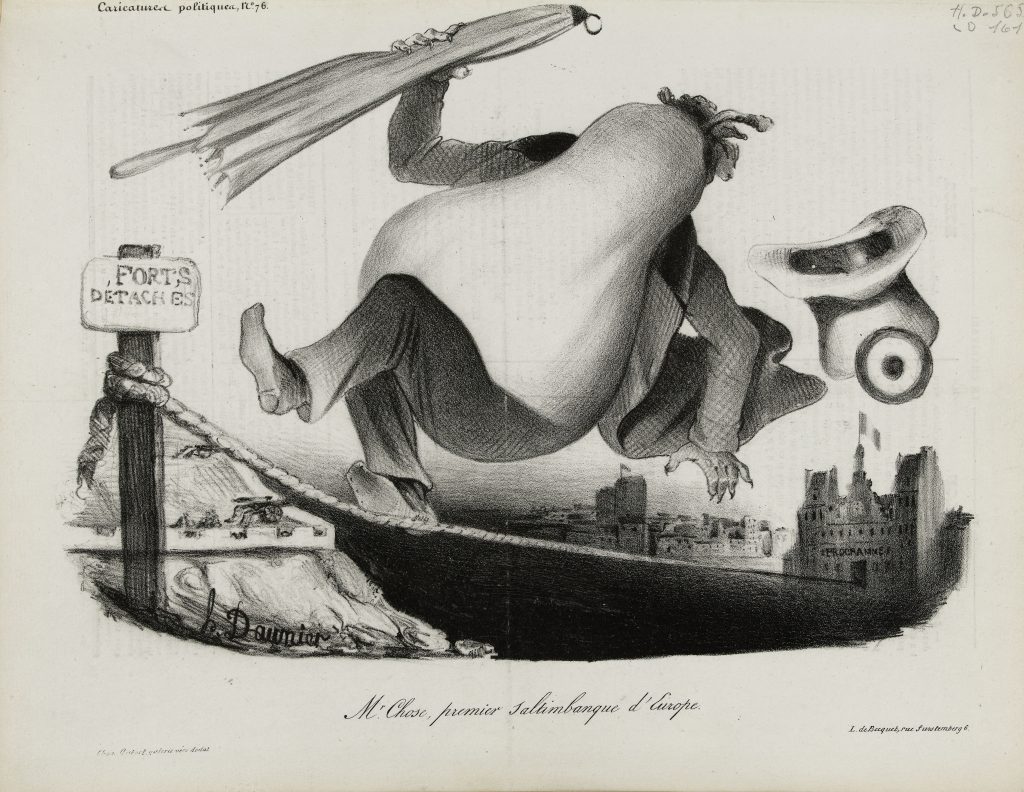
Paris remained without military defences after the destruction of Louis XIII’s old walls in 1670. Various projects for its defence had been drawn up over the years but none had been adopted. Adolphe Thiers, Council President, succeeded in tabling a measure for a fortified enclosure consisting of a continuous wall and sixteen detached forts which was voted in 1840. Rendered useless by advancements in artillery, these fortifications were destroyed after the First World War. Can they be retraced? Certainly, one need only follow the interior ring of the Boulevard Péripherique! The most significant consequence of the costly fortification process was the administrative enlargement of Paris up this enclosure in 1860, incorporating villages like Montmartre, Vaugirard, Belleville, Passy and becoming the limits of Paris today.

A project for a wall around Paris presented to the Chamber of Deputies in 1833 aroused protests from the opposition, which suspected the government of aiming to protect the king from Parisians should they rise up in revolt, rather than defending the city against foreign invaders. The caricatures thus show the canon pointed toward the city and not at the countryside. The pear penned by Daumier symbolises the King of the French, Louis-Philippe, also recognisable by his umbrella and the tricolour badge on his hat: the caricature casts doubt on the king’s capacity to secure approval for his independent forts.

Construction was forbidden on the a band of ground 250 metres wide in front of the fortifications, leaving it clear for defence, When the military purpose of the wall and forts was abandoned, and even before the destruction of the bastions and the glacis, this area which was known as ‘the zone’ began to sprout shacks and flimsy structures whose inhabitants were known as ‘zonards’.
Balzac keenly observed the size and speed of this construction. He wrote to his Polish mistress that he had taken one of their mutual friends to see these fortifications when they had just been completed.
‘I took her on a walk yesterday as far as the fortifications; she was struck all of a heap to see 88 versts [a Russian unit of measurement equal to about a kilometre] of ditches in front, the glacis, the ramparts and counterscarps, a wall 40 feet high [around 13 metres] built as if of a piece and two splendid roadways, planted with trees inside and outside the fortifications. It’s as polished as a mirror, the stones are laid as in Roman cement. She could not believe that I had actually seen these works begun.’
Letter from Balzac to Madame Hanska, 17 June 1844